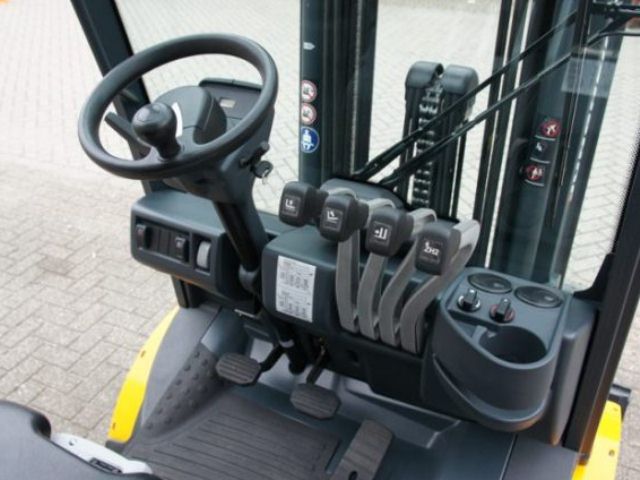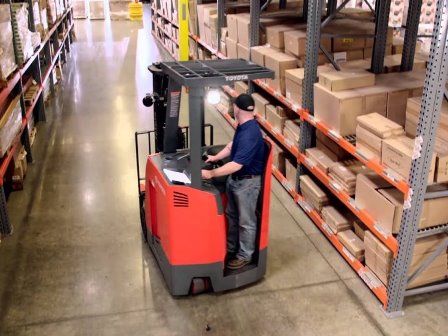The four main levers on a forklift typically control the following functions:
- Lift Lever: This lever is used to raise and lower the forks. Pulling the lever back raises the forks, while pushing it forward lowers them.
- Tilt Lever: This lever controls the tilt of the mast and forks. Pulling the lever back tilts the mast backward (toward the operator), which helps to secure the load during transport. Pushing the lever forward tilts the mast and forks forward, which is useful for picking up and placing loads.
- Side Shift Lever: This lever moves the forks side to side. It allows the operator to shift the forks left or right without moving the entire forklift. This is useful for precise positioning of loads.
- Auxiliary Lever: Depending on the forklift model, this lever can control various attachments or additional functions such as fork positioning, rotating forks, or operating a clamp. The exact function of the auxiliary lever can vary based on the specific attachments and capabilities of the forklift.
These levers provide the operator with control over the essential functions needed to handle loads safely and efficiently.
Forklift lever functions
What do the levers on a forklift do?
The levers on a forklift control various functions essential for operating the machine and handling loads safely and efficiently. Here is a detailed breakdown of the typical functions of the levers:
- Lift Lever:
- Function: Controls the vertical movement of the forks.
- Operation:
- Pulling the lever back raises the forks.
- Pushing the lever forward lowers the forks.
- Usage: Used to lift loads to the desired height for transport or placement.
- Tilt Lever:
- Function: Controls the tilt of the mast and forks.
- Operation:
- Pulling the lever back tilts the mast and forks backward (toward the operator).
- Pushing the lever forward tilts the mast and forks forward.
- Usage: Tilting the mast backward helps secure the load during transport, while tilting it forward assists in picking up and placing loads.
- Side Shift Lever:
- Function: Moves the forks horizontally (side to side).
- Operation:
- Moving the lever to the left shifts the forks to the left.
- Moving the lever to the right shifts the forks to the right.
- Usage: Allows precise positioning of the load without needing to move the entire forklift, which is especially useful in tight spaces.
- Auxiliary Lever (if equipped):
- Function: Controls additional attachments or functions specific to the forklift model.
- Operation: The exact operation depends on the attachment or function it controls. Examples include:
- Fork positioning: Adjusts the distance between the forks.
- Rotating forks: Rotates the forks for dumping or repositioning loads.
- Operating a clamp: Opens and closes a clamp attachment for handling non-palletized loads.
- Usage: Enhances the versatility of the forklift by allowing it to perform specialized tasks based on the attachments used.
These levers are integral to the operation of a forklift, providing the operator with precise control over the machine’s movements and load handling capabilities. Proper training and understanding of each lever’s function are crucial for safe and efficient forklift operation.

Forklift Controls levers
Although forklifts are capable of doing many jobs, they are also dangerous and must be safely operated.

How to operate a stand-up forklift?
Two main ways of operating a forklift exist. Operating while sitting down, and operating while standing up.
